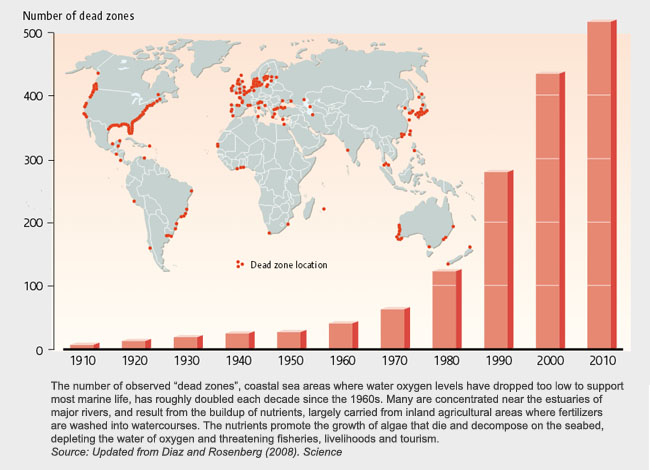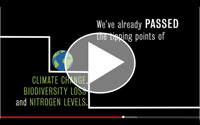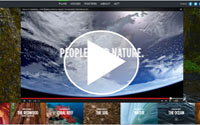1.1.1 Global biodiversity decline

Increasingly nature is viewed not as something to be exploited or controlled but as something we need to work with; humans not as separate or above nature but as an integral part of the earth’s environment and ecological systems.
Over the past couple of decades, the awareness of the increasing rate of loss of biodiversity and issues like climate change has led us to start thinking differently about our relationship with the planet we live on.
According to the Biodiversity Synthesis of Ecosystems and Human Well-being [Millenium Ecosystem Assessment, 2005 ]: “Human actions are fundamentally, and to a significant extent irreversibly, changing the diversity of life on Earth, and most of these changes represent a loss of biodiversity. Changes in important components of biological diversity were more rapid in the past 50 years than at any time in human history. Projections and scenarios indicate that these rates will continue, or accelerate, in the future.”
]: “Human actions are fundamentally, and to a significant extent irreversibly, changing the diversity of life on Earth, and most of these changes represent a loss of biodiversity. Changes in important components of biological diversity were more rapid in the past 50 years than at any time in human history. Projections and scenarios indicate that these rates will continue, or accelerate, in the future.”
Numerous reports have recently highlighted the continued decline in species and habitats across the world [Butchart et al, 2010; Secretariat of the Convention on Biological Diversity, 2014; IUCN, 2009 ] and the link to the increase of anthropogenic development has been established in many cases. Some ecosystems are so degraded that the issue of tipping points and the capacity of some ecosystem to recover is uncertain. According to the IUCN, despite considerable collective initiatives, governments are highly unlikely to achieve the target of slowing the rate of loss of biodiversity by 2010 adopted at the World Summit on Sustainable Development [IUCN Situation analysis, 2012
] and the link to the increase of anthropogenic development has been established in many cases. Some ecosystems are so degraded that the issue of tipping points and the capacity of some ecosystem to recover is uncertain. According to the IUCN, despite considerable collective initiatives, governments are highly unlikely to achieve the target of slowing the rate of loss of biodiversity by 2010 adopted at the World Summit on Sustainable Development [IUCN Situation analysis, 2012 ].
].

Figure: Number of marine “dead zones” since 1910. Source: Global Biodiversity Outlook 3 [Secretariat of the Convention on Biological Diversity, 2010 ], updated from Diaz and Rosenberg [2008
], updated from Diaz and Rosenberg [2008 ].
].
 The University of Minnesota's Institute on the Environment explored in a three-minute multimedia feature by the Big Question: "Is Earth past the tipping point?". This video draws on research from the article 'A safe operating space for humanity', published in 2009 in the journal Nature [Rockström et al., 2009
The University of Minnesota's Institute on the Environment explored in a three-minute multimedia feature by the Big Question: "Is Earth past the tipping point?". This video draws on research from the article 'A safe operating space for humanity', published in 2009 in the journal Nature [Rockström et al., 2009 ].
].
 The American non-profit environmental organisation Conservation International produced a series of multimedia features on the theme: “Nature doesn’t need people. People need nature”. In the first video, Julia Roberts is Mother Nature. (natureisspeaking.org).
The American non-profit environmental organisation Conservation International produced a series of multimedia features on the theme: “Nature doesn’t need people. People need nature”. In the first video, Julia Roberts is Mother Nature. (natureisspeaking.org).

